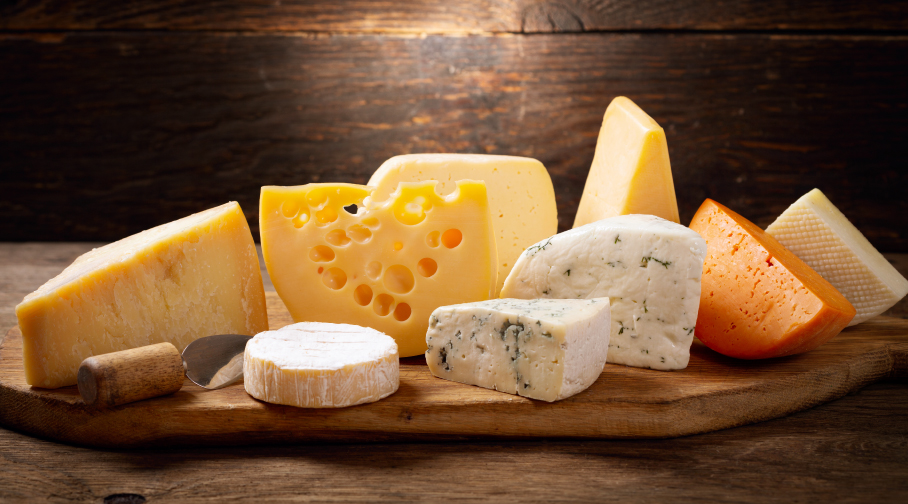North America has solidified its position as the unrivaled leader in the global cheese market, holding the predominant share as of 2022. This dominance is rooted in a confluence of abundant raw material resources, advanced processing infrastructure, and a consumer base that views cheese as an indispensable ingredient in everyday cuisine. With the overall market valued at USD 84.26 billion in 2022 and forecasted to reach USD 123.37 billion by 2030 at a CAGR of 4.6% from 2023 to 2030, North America's contributions are pivotal, driven by high production volumes and innovative distribution networks.
Cheese, fundamentally a dairy product from cow, buffalo, goat, or sheep milk—or increasingly from plant-based sources like soy, almond, and coconut—offers nutritional prowess with proteins, minerals, fats, and calcium that support bone strength and cardiovascular wellness. In North America, cow milk remains the primary source, leveraging vast dairy farms in the U.S. and Canada. The region's market growth is propelled by the food industry's insatiable appetite for cheese in staples like pizzas, burgers, and pastas, where its affordable pricing, extended shelf-life, and distinctive flavors (gorgonzola's tang, Roquefort's sharpness, stilton's creaminess) enhance appeal.
E-commerce's surge, facilitated by platforms like Amazon and Walmart, has amplified accessibility, aligning with rising internet usage. Technological strides, including supercooling for preservation, ultrafiltration for protein refinement, and microfiltration for purity, enable efficient scaling and storage, ensuring North American cheeses reach global tables with unwavering quality. However, challenges persist: additives in processed varieties raise alarms over obesity and cholesterol, prompting calls for moderation.
Opportunities emerge in crafting low-cholesterol and low-fat alternatives, aligning with health trends while preserving the product's delectable essence. Segmentation illuminates North America's diversity. By type, fresh cheeses suit quick meals, aged and hard varieties appeal to traditionalists, blue cheeses to adventurers, soft & semi-soft to the masses, and flavor-added to experimenters. Products like mozzarella dominate pizza chains, cheddar graces sandwiches, feta enlivens salads, parmesan crowns pastas, and Roquefort elevates charcuterie.
Distribution leans heavily on hypermarkets and supermarkets for volume, convenience stores for impulse buys, and specialty stores for premium imports. Within North America, the U.S. leads, followed by Canada and Mexico, where cultural fusions introduce buffalo milk influences. Comparatively, while Europe boasts high per capita intake—Denmark at 28.1 kg, Finland at 27.7 kg, France at 27.2 kg—North America's sheer scale tips the balance.
Competitive forces are fierce, with The Kraft Heinz Company innovating flavors, Nestlé S.A. expanding portfolios, Arla Foods Group focusing on sustainability, Fonterra Co-operative Group Limited on cooperatives, Savencia Fromage & Dairy on artisanal lines, Britannia Industries on emerging segments, FrieslandCampina on investments like its USD 3.2 million Romanian facility yielding 8,000 tonnes yearly, Dairy Farmers of America on domestic sourcing, Saputo Inc. on acquisitions such as Bute Island Foods in May 2021 for lactose-free options, and GCMMF (Amul) on affordable staples.
Recent moves underscore dynamism: Kraft Heinz's July 2021 collaboration with Van Leeuwen Ice Cream birthed cheese-infused treats, signaling cross-category creativity. As the market hurtles toward 2030, North America's infrastructure will sustain its lead, fostering innovations that address health concerns and capitalize on e-commerce. This region's cheese narrative is one of abundance and adaptation, promising sustained prosperity in a USD 123.37 billion landscape.





Comments